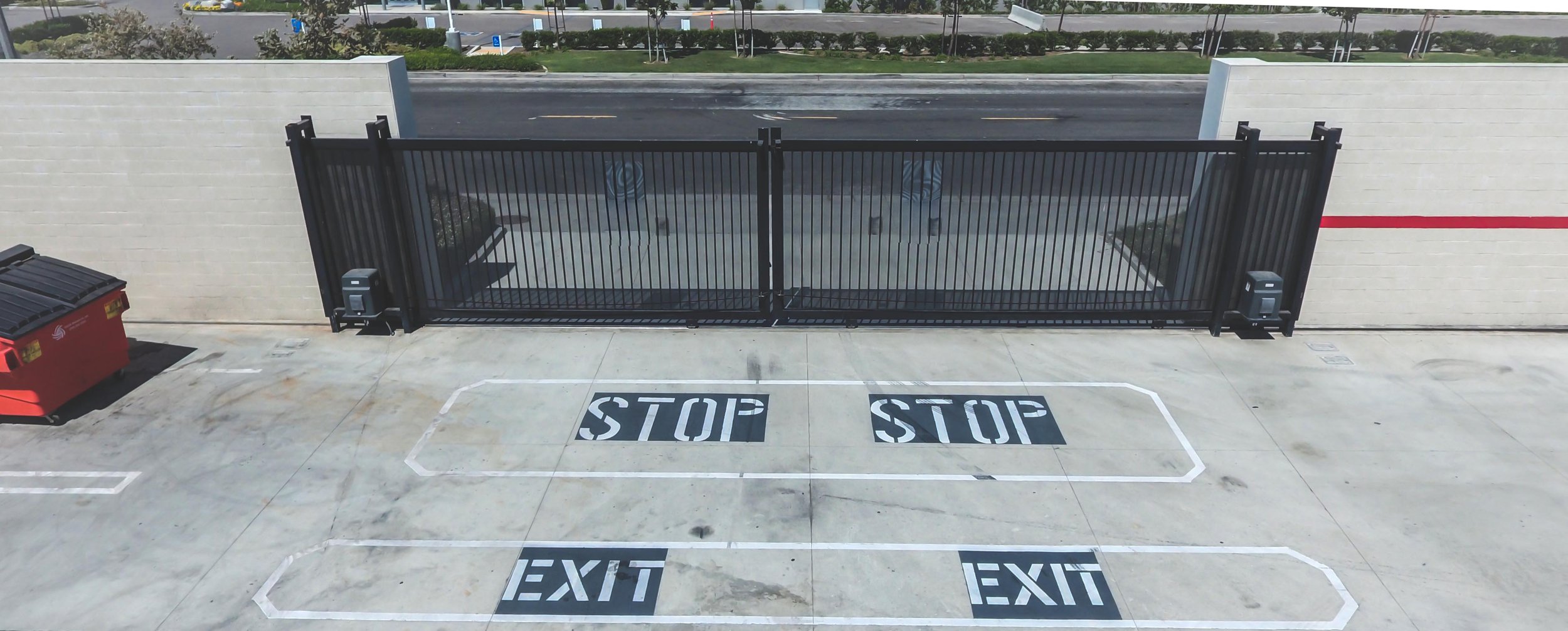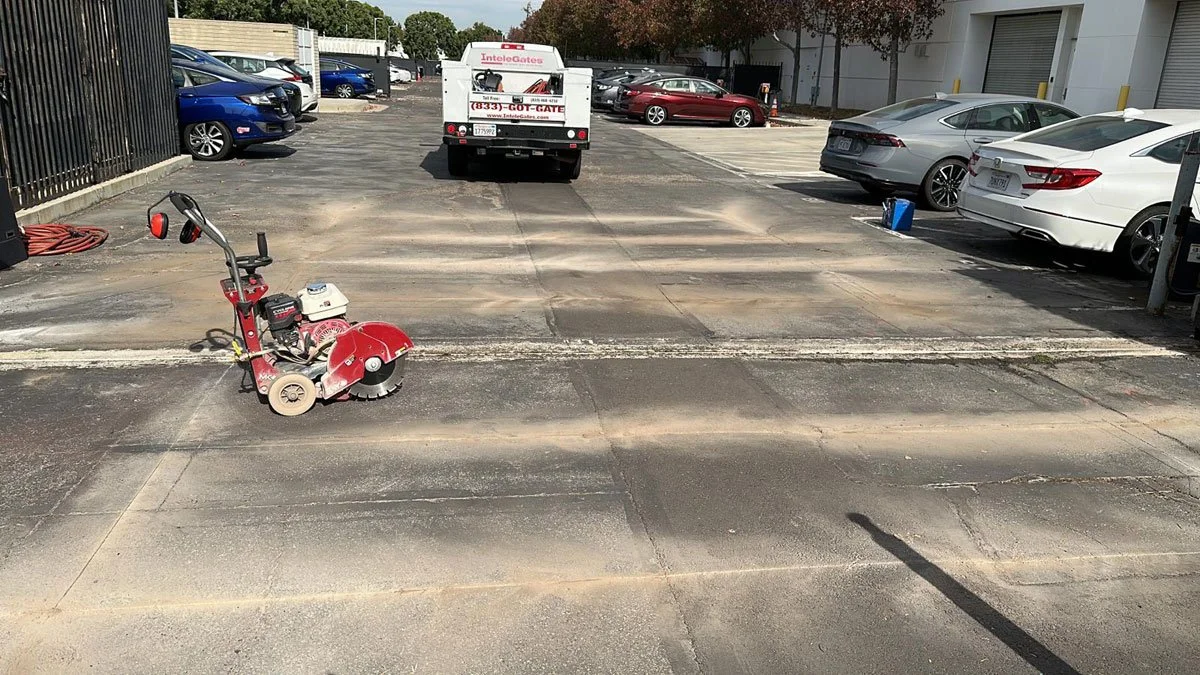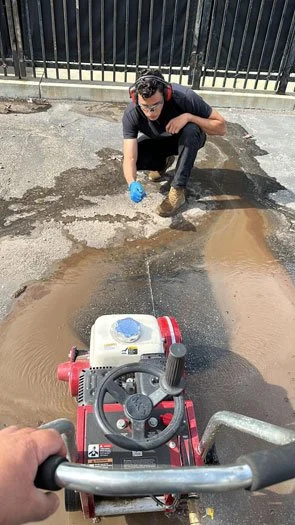
Cutting The Driveway
Preparing Your Driveway for Driveway Loops
What Is A Driveway Loop?
Unlock the power of driveways with driveway loops. Also known as vehicle detection loops or induction loops, these essential components are the key to automatic gate systems and traffic control devices. A simple wire loop installed beneath the surface of driveways and roadways, they act as sensors, detecting passing vehicles.
How Driveway Loops Work
As a vehicle disrupts the electromagnetic field generated by the loop, a signal is sent to the controller, triggering a variety of actions. From opening gates to activating traffic lights and surveillance systems, driveway loops are commonly found in residential driveways, commercial parking lots, toll booths, and anywhere vehicle control and traffic management is needed. Unleash the potential of your space with driveway loops.
Cutting The Driveway For Driveway Loops
One of the critical services we offer at InteleGates is cutting the driveway for loops. Our team of skilled technicians are well-versed in designing and installing in-ground loop sensors that detect the movement of vehicles entering and exiting your property. We understand that each driveway is unique and requires a tailored solution.
At InteleGates, we use the latest technology and tools to ensure that our driveways’ loops are cut with precision and accuracy. We take great care to minimize any disruption to your property and install the sensors with minimal visible impact on your driveway’s aesthetics. Our team also ensures that the loops are properly calibrated to ensure reliable performance.
The Cutting Process
The driveway cutting process for driveway loops involves several steps to ensure proper installation and functionality. Here is an overview of how the process typically works:
Planning: Before beginning the cutting process, it’s essential to plan the placement and size of the driveway loop. Consider factors such as the location of the gate or traffic control device, the desired detection area, and any specific requirements for the loop system.
Marking: Once the planning is complete, mark the area on the driveway or roadway where the loop will be installed. This typically involves measuring and marking the desired loop shape and size using spray paint or chalk.
Cutting: Use a concrete saw or similar cutting tool to carefully cut into the marked area of the driveway. The depth and width of the cut will depend on the specifications provided by the loop manufacturer or installer. It’s important to follow these guidelines precisely to ensure proper loop performance.
Loop Installation: After the cut is made, the loop wire is laid inside the groove. The wire is typically made of a durable, insulated material designed to withstand the weight of vehicles and resist damage from weather and other external factors. The wire is looped multiple times within the cut area, ensuring complete coverage of the desired detection zone.
Sealing: Once the loop wire is in place, it is secured and sealed using a suitable compound or epoxy. This helps protect the wire from moisture, corrosion, and physical damage. The sealing process ensures the longevity and reliability of the loop system.
Testing and Integration: After the loop is installed and sealed, it’s important to test its functionality. This involves connecting the loop wires to the control unit or system and conducting tests to ensure proper detection and response. Adjustments may be necessary to optimize the sensitivity and reliability of the loop.
It’s worth noting that the driveway cutting process for driveway loops may vary depending on the specific system and installation requirements. It’s recommended to consult with a professional installer or follow the manufacturer’s guidelines for the best results.
Get A Driveway Cutting Quote Today!
Brands We Work With
InteleGates provides repair and installation of gates and gate automation for the following brands















